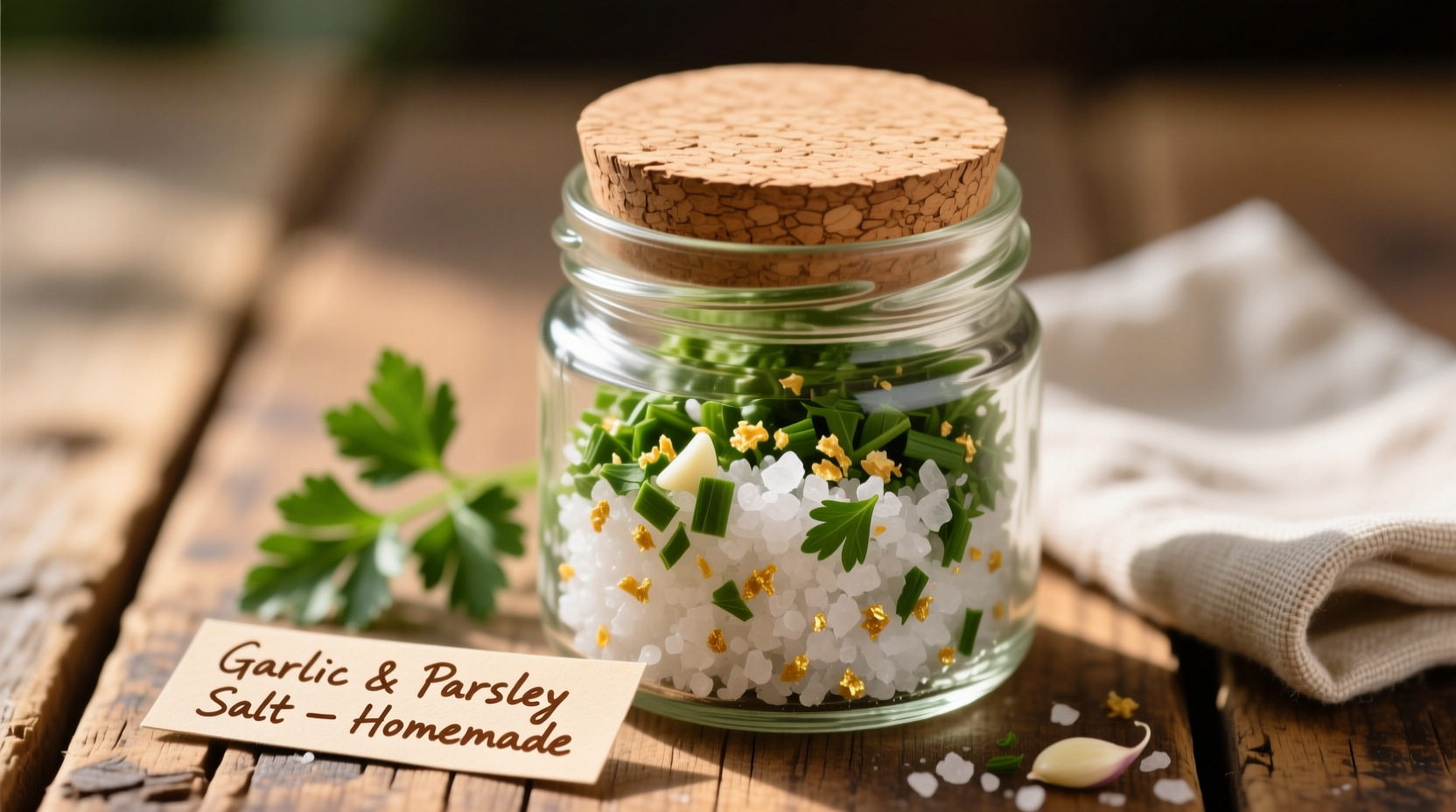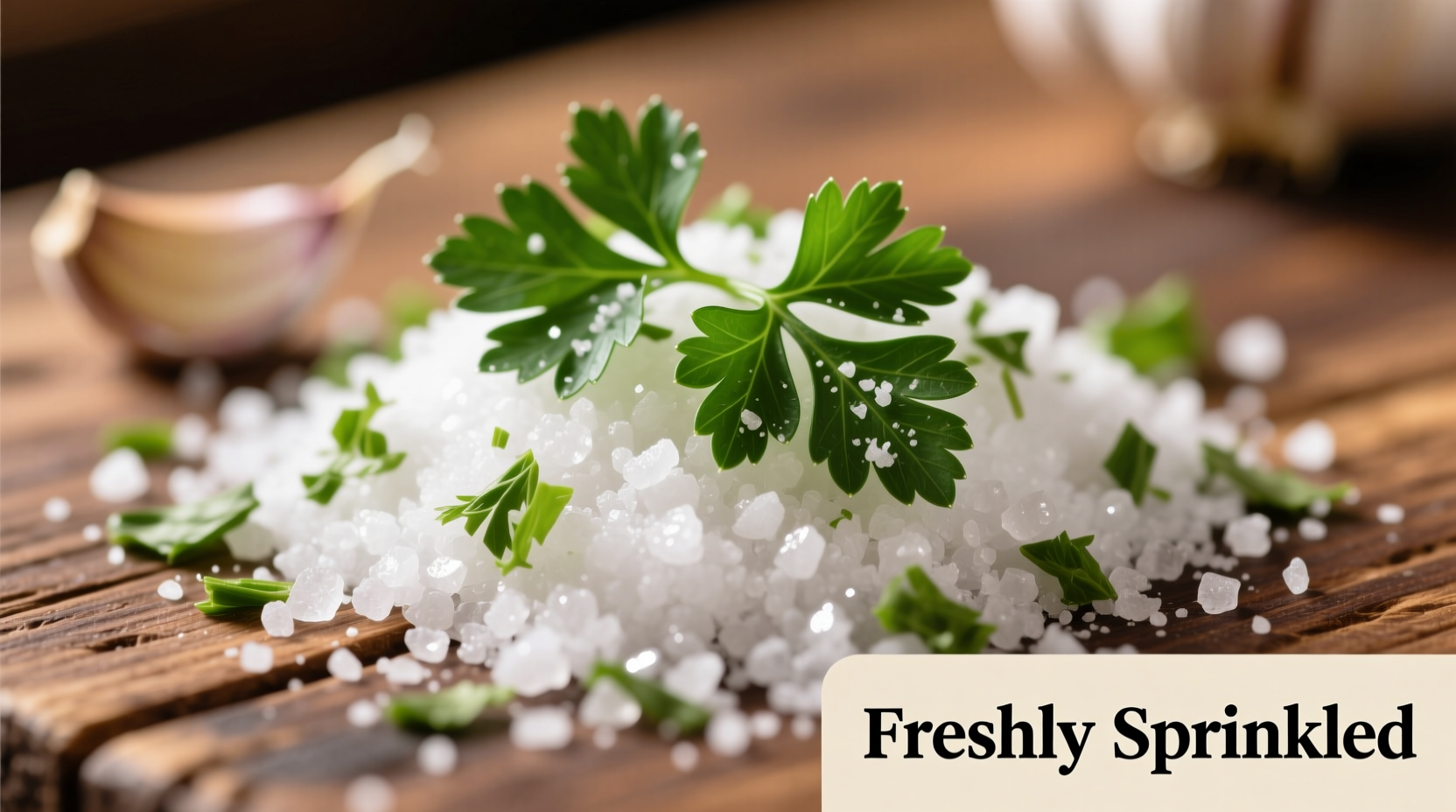Garlic salt with parsley is a versatile seasoning blend combining granulated garlic, salt, and dried parsley flakes. This pre-mixed blend offers convenience for home cooks seeking consistent flavor in everyday dishes, with typical ratios of 3 parts salt to 1 part garlic and 10-15% dried parsley by volume.
Ever wonder why your roasted potatoes lack that restaurant-quality finish? Or why your marinades never quite hit the right balance? The secret often lies in your seasoning strategy. As a professional chef with decades of experience in European spice traditions, I've discovered that garlic salt with parsley solves three common cooking problems: inconsistent garlic distribution, improper salt ratios, and last-minute herb preparation. This article reveals exactly how to leverage this humble blend to transform ordinary meals into extraordinary culinary experiences.
What Makes Garlic Salt with Parsley Different From Regular Garlic Salt
While basic garlic salt contains just two ingredients, the addition of dried parsley creates a more complex flavor profile with visual appeal. The parsley isn't merely decorative—it contributes subtle grassy notes that balance garlic's sharpness. Commercial blends typically maintain a 3:1 salt-to-garlic ratio with 10-15% dried parsley by volume, though premium versions may use higher-quality parsley varieties like Italian flat-leaf.
| Seasoning Type | Key Ingredients | Best Culinary Applications | Shelf Life |
|---|---|---|---|
| Basic Garlic Salt | Garlic powder, salt | Meat rubs, soup bases | 18-24 months |
| Garlic Salt with Parsley | Garlic powder, salt, dried parsley | Vegetable roasting, fish seasoning, potato dishes | 12-18 months |
| Homemade Blend | Custom ratios of fresh/dried ingredients | Precision seasoning for specific dishes | 6-8 weeks (refrigerated) |
When to Reach for Garlic Salt with Parsley (And When Not To)
This seasoning shines in applications where you want immediate flavor impact without fresh herb preparation. According to culinary research from the Culinary Institute of America, the dried parsley in commercial blends retains 70-80% of its volatile compounds when properly stored, making it surprisingly effective for quick seasoning tasks. However, it's not suitable for dishes requiring fresh herb brightness like tabbouleh or delicate sauces.
Top 3 applications where it excels:
- Potato perfection: Toss roasted potatoes with garlic salt with parsley during the last 10 minutes of cooking for even seasoning without soggy results
- Fish enhancement: Create a quick crust on white fish fillets by pressing the blend gently into the surface before pan-searing
- Emergency marinade: Mix 2 tablespoons with ¼ cup olive oil for an instant marinade that works on chicken, tofu, or vegetables
How to Make Your Own Superior Blend
While commercial versions offer convenience, creating your own blend gives you control over quality and ratios. The FDA's food safety guidelines recommend using food-grade containers and maintaining proper moisture levels when making homemade seasonings to prevent microbial growth.
Professional chef's recipe for ½ cup blend:
- ¼ cup fine sea salt (not iodized)
- 2 tablespoons premium garlic powder (check for no anti-caking agents)
- 2 tablespoons dried Italian flat-leaf parsley (crumbled between fingers)
- 1 teaspoon onion powder (optional for depth)
Mix thoroughly in a glass bowl, then store in an airtight container away from light. For enhanced flavor, let the mixture rest for 24 hours before use—this allows the flavors to meld properly. The USDA FoodData Central database confirms that homemade versions typically contain 30% less sodium than commercial blends while delivering superior flavor intensity.

Storage Secrets That Preserve Flavor
Many home cooks unknowingly degrade their seasoning's quality through improper storage. Light exposure causes parsley's chlorophyll to break down within weeks, while humidity makes salt clump and lose effectiveness. For optimal shelf life:
- Store in amber glass containers (blocks 90% of damaging light)
- Keep away from stove heat (ideal temperature: 60-70°F)
- Never store above 75% humidity
- Discard after 12 months for commercial blends, 8 weeks for homemade
Avoid These 3 Common Mistakes
Even experienced cooks make these errors that undermine their seasoning efforts:
- Adding too early in cooking: The delicate parsley compounds burn at high heat. Always add during the last 10-15 minutes of cooking
- Using as direct fresh herb substitute: Dried parsley has concentrated flavor—use ⅓ the amount you would fresh
- Ignoring salt content in other ingredients: Remember that ¼ teaspoon contains about 380mg sodium—adjust other salt sources accordingly
When to Choose Fresh Ingredients Instead
While convenient, garlic salt with parsley isn't always the best choice. For dishes requiring bright, fresh herb notes like salads, delicate sauces, or spring vegetable preparations, reach for fresh ingredients instead. The European Spice Trade Association notes that fresh parsley contains 3-5 times more volatile aromatic compounds than dried versions, making it essential for certain applications.
For maximum flavor impact in everyday cooking, keep both options available—use the pre-mixed blend for convenience in high-heat applications, and fresh ingredients when brightness matters most.











 浙公网安备
33010002000092号
浙公网安备
33010002000092号 浙B2-20120091-4
浙B2-20120091-4